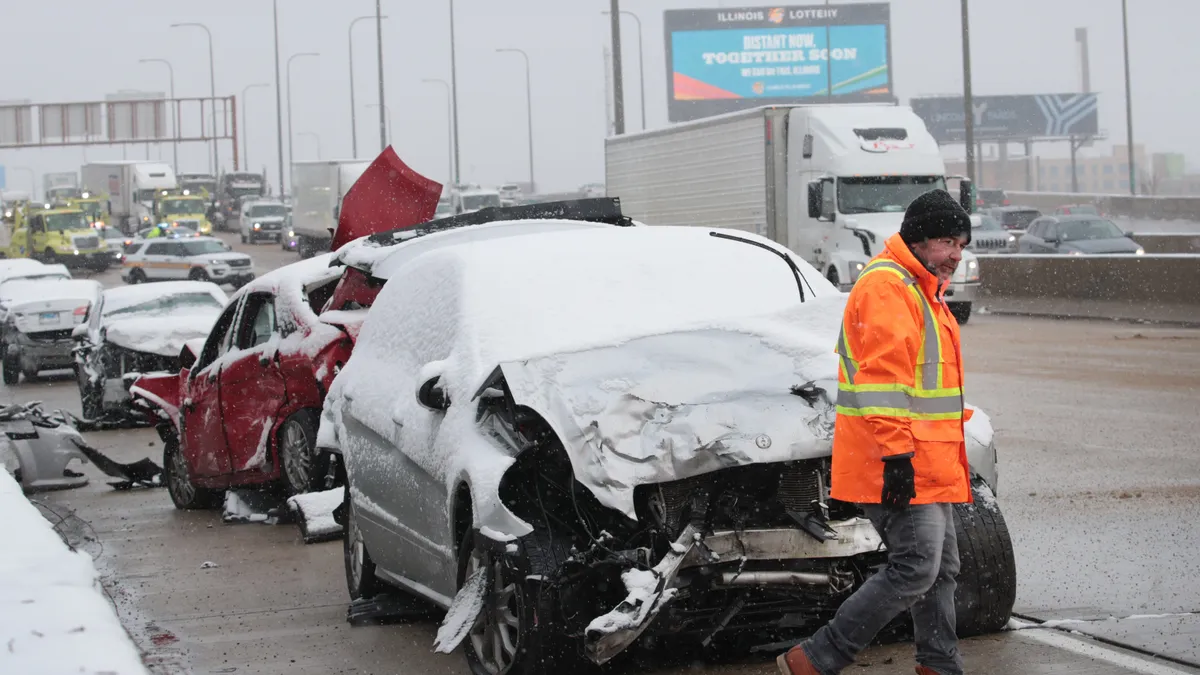Dive Brief:
- Witnesses appearing yesterday before a House Transportation and Infrastructure subcommittee hearing on roadway safety spoke to the surge in traffic fatalities, including the rise in deaths among pedestrians and bicyclists.
- The National League of Cities submitted several recommendations, among them that states adopt the “Safe System” approach, as well as other actions for Congress, the administration, state departments of transportation and the road safety community to take.
- While new federal funds to help combat the rise in fatalities are available through the bipartisan infrastructure law, rising construction and labor costs will reduce the number of safety-related projects that can be undertaken, speakers said.
Dive Insight:
“We are moving in the wrong direction,” said U.S. Rep. Eleanor Holmes Norton, D-D.C., setting the stage for the hearing by pointing to the grim statistic of 42,915 traffic fatalities in 2021. Norton chairs the Highways and Transit Subcommittee.
Ludwig Gaines, executive director for the Washington Area Bicyclist Association, spoke to equity concerns and the risks to pedestrians and bicyclists.
“Traffic safety is most definitely an equity issue,” Gaines said, noting “a disproportionate impact is visited upon poor, minority and low-income communities, and that is a policy decision by decision-makers not to resource those communities, and those communities are suffering.”
“People walking and biking are the ones bearing the brunt of this danger,” Gaines said. “They are the ones most at disproportionate risk.”
Boise, Idaho, City Council President Elaine Clegg, representing the National League of Cities, outlined several NLC recommendations in a written statement provided to the subcommittee. The recommendations include that Congress and the Transportation Department provide clarity in infrastructure spending, increase transportation support to small and rural local governments, and stop using travel speed as the most important measure in a benefit-cost analysis. Instead, NLC calls for a benefit-cost analysis with a broader assessment of total travel time, impact on other road users, average travel distance, impact on travel distance and impact on the local economic output.
Clegg also addressed constraints imposed by the federal Manual on Uniform Traffic Control Devices.
“The MUTCD is not working to create safer conditions … it's become quite confusing. It's difficult, especially for small jurisdictions to use. They have to hire expensive traffic engineers to interpret for them what's appropriate. We often find that we ask for something, and MUTCD is used as a reason not to do that because there's some arcane rule somewhere that says that's not the appropriate measure.”
Cindy Williams, president of paving materials supplier Time Striping, spoke on behalf of the American Traffic Safety Services Association regarding the effects of inflation on the bipartisan infrastructure law.
“The [Infrastructure Investment and Jobs Act] invests historic levels of funding in roadway safety, but challenges loom that will prevent the full implementation of the infrastructure package and put lives at risk. The construction industry is facing a significant workforce and material shortage. A recent survey of our member companies found that 92% are experiencing shortages of raw materials. Another challenge impacting the maximum effectiveness of the IIJA is the high rate of inflation. If these rates continue, our ability to reduce roadway fatalities and serious injuries will be undermined.”
Witnesses appearing at the hearing did not include representatives from the Department of Transportation or the National Transportation Safety Board.












